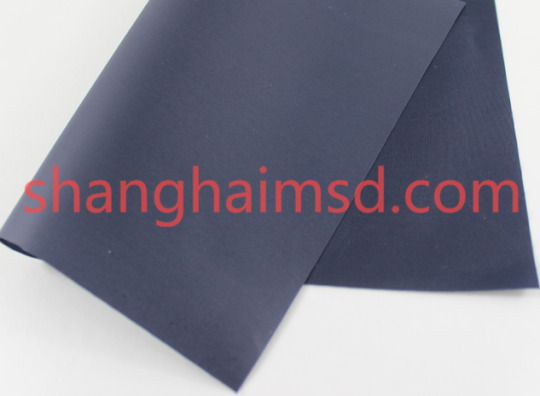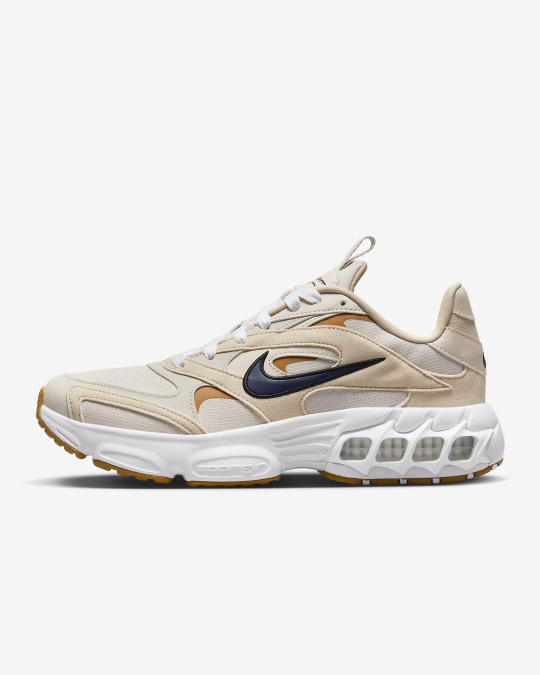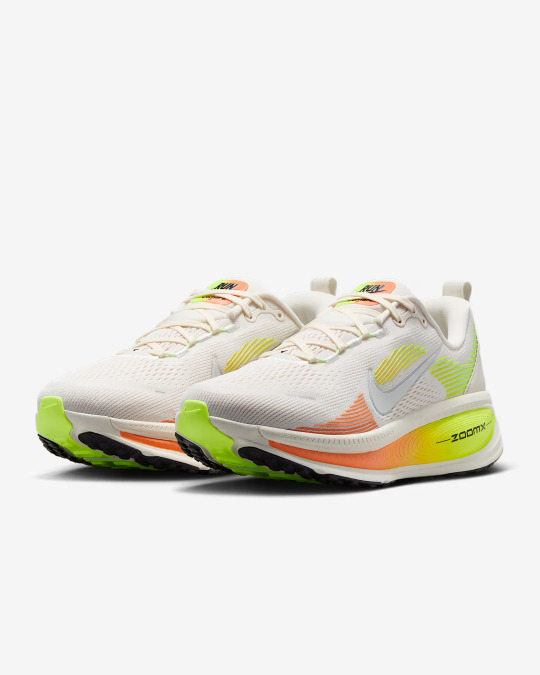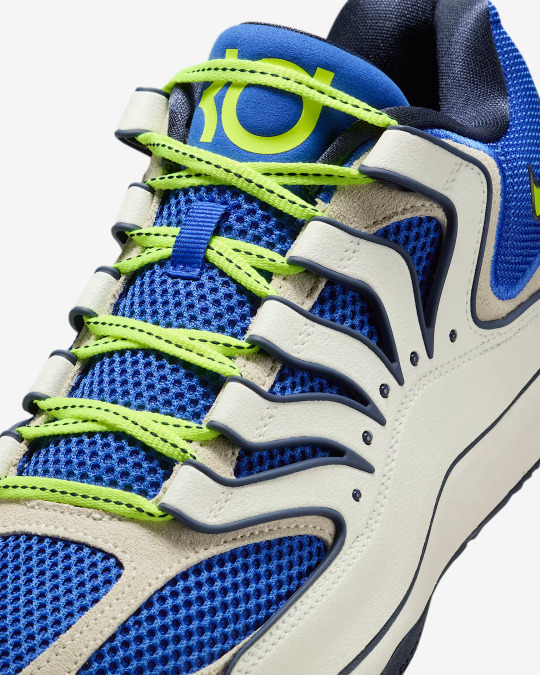#Smart Textiles
Explore tagged Tumblr posts
Text
Textile Packaging for a Circular Future
As functional design becomes a cornerstone in both industrial and consumer products, TPU Compound Fabric Manufacturers are increasingly seen as enablers of advanced material integration. Shanghai MSD International Trade Co., Ltd. addresses this market by offering tailored TPU compound fabric solutions that support product performance in environments where flexibility, resistance, and aesthetics must work in tandem.
TPU compound fabric is not a one-size-fits-all material; its value lies in the ability to adapt formulations based on the end-use. By combining thermoplastic polyurethane with textile substrates like nylon, polyester, or mesh, manufacturers deliver materials that are stretchable, durable, waterproof, and even flame retardant. Shanghai MSD ensures the precision of lamination techniques and fabric compatibility to provide reliable outputs for critical sectors such as aerospace, public infrastructure, and performance wear.
One prominent area of growth is in modular architecture and event installations, where inflatable structures, portable booths, and retractable covers rely on strong yet lightweight materials. TPU Compound Fabric Manufacturers support this innovation by offering high-frequency weldable surfaces that can be molded or bonded into custom shapes. Shanghai MSD supplies TPU-coated fabrics with strong dimensional stability and UV resistance, ensuring that temporary structures can endure repeated assembly without degradation.
In luxury goods and high-end fashion, TPU fabric introduces a modern, tactile element while ensuring protection from moisture and wear. Used in luggage, rainwear, and tech-forward apparel, these fabrics contribute to premium product experiences without compromising comfort. Shanghai MSD supports creative brands with transparent, embossed, or textured TPU films applied to fine fabric bases, allowing designers to experiment with surface effects that are both functional and attractive.
The performance gear market also heavily relies on TPU compound fabrics. Sports pads, yoga accessories, hydration packs, and bike bags require abrasion resistance, flexibility, and sometimes antimicrobial surfaces. Shanghai MSD delivers TPU fabrics engineered for breathability, anti-slip functionality, and stretch recovery, giving athletes and manufacturers alike the confidence to push limits without worrying about material failure.
As industries digitize, applications involving RFID shielding, pressure sensors, and soft circuitry increasingly utilize TPU-coated textiles. TPU Compound Fabric Manufacturers working in collaboration with tech firms are helping to redefine what textiles can do—whether in wearable electronics or flexible medical patches. Shanghai MSD is actively building its capacity to meet these emerging demands with advanced TPU film sourcing and compatibility testing for printed electronics.
Another segment showing strong demand is the automotive interior market. Seat covers, dashboard skins, and flexible liners require materials that are aesthetically refined and resistant to long-term stress. TPU compound fabrics offer a sleek finish, with options for low-VOC and odor-free processing. Shanghai MSD works with automotive suppliers to deliver fabric solutions that align with performance, appearance, and environmental standards, including RoHS and REACH compliance.
Packaging innovation is yet another frontier. Reusable, flexible packaging made from TPU fabrics is gaining favor in industrial and B2B logistics. These materials allow for reduced waste, high impact resistance, and branding through printing or embossing. Shanghai MSD supports clients seeking to replace traditional rigid packaging with high-performance textile alternatives that maintain protection and reduce shipping weight.
From early-stage product development to full-scale production, Shanghai MSD International Trade Co., Ltd. ensures that its TPU compound fabrics meet the varied and evolving demands of global markets through dependable supply, material customization, and technical support.For more information, visit shanghaimsd.com .

0 notes
Text
Die Zukunft der Bekleidung – Status Quo, Herausforderungen und Innovationen
1. Ausgangssituation: Warum braucht Kleidung eine Revolution?
Die Bekleidungsindustrie hat sich in den letzten Jahrzehnten nur wenig grundlegend verändert. Trotz einiger Fortschritte in der Funktionsbekleidung (z. B. Sporttextilien, wetterfeste Kleidung) bleibt Alltagskleidung weitgehend traditionellen Mustern verhaftet.
• Historische Elemente wie Knöpfe (seit dem 13. Jahrhundert) und Reißverschlüsse (seit 1920) sind nach wie vor zentrale Verschlüsse.
• Textilien bestehen überwiegend aus Baumwolle, Wolle und synthetischen Fasern wie Polyester – trotz bekannter Umweltprobleme.
• Die Modeindustrie hat ein massives Nachhaltigkeitsproblem durch Überproduktion, Umweltverschmutzung und Müllaufkommen.
Fazit: Kleidung ist in vielen Bereichen technologisch rückständig, und die Branche reagiert nur zögerlich auf Veränderungen.
2. Technologische Fortschritte und innovative Materialien
2.1 Smarte Materialien zur Temperaturregulierung
• Thermoelektrische Textilien: Entwickelt u. a. vom Leibniz-Institut für Photonische Technologien. Diese Textilien nutzen Körperwärme zur Stromerzeugung oder Kühlung.
• Phase-Change-Materialien: Diese Stoffe speichern Wärme und geben sie bei Bedarf wieder ab (inspiriert von NASA-Technologien).
• Selbstkühlende Gewebe: Forschungen zu Textilien, die sich selbstständig kühlen, um Überhitzung zu verhindern.
2.2 Elektronische Textilien (E-Textiles)
• Textilien mit eingebauten Sensoren: Können Gesundheitsdaten messen (z. B. Herzfrequenz, Körpertemperatur) und in Sport, Medizin oder Arbeitsschutz genutzt werden.
• Heiz- und Kühltextilien: Integrierte Elektronik sorgt für aktive Temperatursteuerung.
• Datenübertragende Kleidung: Kleidung, die mit Smartphones oder anderen Wearables interagiert.
2.3 Energieerzeugung durch Bewegung oder Körperwärme
• Piezoelektrische Fasern: Wandeln mechanische Energie (z. B. Gehen, Druck) in Strom um. Anwendung u. a. für selbstversorgende Kleidung oder tragbare Elektronik.
• Drucksensitive Materialien: In Schuhen integrierte Energieumwandler, die Belastung in elektrische Energie umwandeln.
2.4 Farbwechselnde Kleidung
• Thermochrome Textilien: Ändern die Farbe durch Temperaturveränderungen.
• Elektrochrome Materialien: Ermöglichen Farbänderungen durch elektrischen Impuls.
• Anpassbare Designs durch Mikrofluidik: Flüssigkeitskanäle in Stoffen, die Farbstoffe transportieren.
3. Nachhaltigkeit und Ressourcenschonung in der Textilindustrie
Die Modebranche ist eine der größten Umweltverschmutzer weltweit. Einige neue Ansätze zur Verbesserung:
• Recycling-Konzepte & Kreislaufwirtschaft:
• Biologisch abbaubare Textilien und Fasern aus Pilzen, Algen oder recycelten Materialien.
• Modulare Kleidung, die sich individuell anpassen lässt, um weniger Konsum zu fördern.
• Adhäsions- und Klettverschlüsse als Alternative zu Reißverschlüssen:
• Neue Verschlusstechniken könnten umständliche Mechanismen ersetzen.
• Nachhaltige Produktionsmethoden:
• Wasserfreier Färbeprozess zur Reduzierung des Chemikalieneinsatzes.
• 3D-gedruckte Kleidung zur Minimierung von Verschnitt.
4. Herausforderungen und Widerstände der Industrie
Warum bewegt sich die Modebranche nur langsam?
• Traditionelle Hersteller setzen auf bestehende Produktionsketten und scheuen große Investitionen in Innovationen.
• Fast Fashion dominiert den Markt, wodurch der Fokus auf kurzfristige Trends anstelle von nachhaltigen Innovationen liegt.
• Die Konsumentenakzeptanz ist uneinheitlich: Viele Menschen sind an klassische Materialien und Designs gewöhnt und zeigen Zurückhaltung gegenüber neuer Technologie in Kleidung.
• Hochpreisige Technologien: Smarte Textilien sind aktuell oft noch zu teuer für den Massenmarkt.
5. Globale Vorreiter: Wer treibt Innovationen in der Textilbranche voran?
Japan:
• Teijin Frontier forscht an Mikroplastik-reduzierenden und pflanzenbasierten Fasern.
• Universitäten entwickeln neue textile Materialien und Smart Textiles.
China:
• Starke staatliche Förderung von Smart Textiles und nachhaltiger Modeproduktion.
• Forschung an Kombinationen aus Elektronik und Textilien für tragbare Technologien.
Deutschland:
• Hochschule Niederrhein: Forschung zu Smart Textiles und textiler Sensorik.
• Fraunhofer IZM: Entwicklung von elektronischen Textilien mit integrierten Leiterbahnen.
• Wuppertal Institut: Studien zur Transformation der Modebranche durch Kreislaufwirtschaft.
6. Wo gibt es Diskussionen? Relevante Foren & Plattformen
Soziale Medien & Foren
• LinkedIn Gruppen: Smart Textiles, Future of Fashion
• Reddit: r/Futurology, r/Technology
• Facebook & Discord Communities für Smart Clothing & Nachhaltige Mode
Fachorganisationen & Events
• Anwenderforum Smart Textiles (Deutschland)
• Wearable Technology Conference (Global)
• FashionTech Berlin
7. Fazit und offene Fragen für Diskussionen
Zentrale Thesen:
✅ Die Bekleidungsindustrie befindet sich im Umbruch, aber der Wandel ist langsam.
✅ Smarte Textilien, neue Materialien und nachhaltige Produktion sind entscheidende Innovationsfelder.
✅ Traditionelle Akteure zögern, während neue Player (Startups, Tech-Unternehmen) den Wandel vorantreiben.
✅ Große Herausforderungen bestehen in Massenakzeptanz, Preisgestaltung und Produktion.
Offene Fragen für Diskussionen:
1. Welche Technologien werden sich zuerst durchsetzen? Wo ist das größte Potenzial?
2. Wie kann man Verbraucher für nachhaltige oder smarte Kleidung begeistern?
3. Sind neue Geschäftsmodelle notwendig (z. B. Kleidung als Service statt als Produkt)?
4. Wie können Regulierungen oder Förderprogramme Innovationen in der Textilbranche beschleunigen?
5. Welche Branchen (z. B. Sport, Medizin, Arbeitskleidung) könnten als erstes smarte Kleidung massenhaft nutzen?
Schlusswort: Evolution oder Revolution?
Die Bekleidungsindustrie steht vor einer potenziellen Revolution, doch aktuell ist der Wandel eher eine Evolution. Während erste Leuchtturmprojekte weltweit entstehen, bleibt die breite Anwendung noch aus. Die Fragen, wie Mode intelligenter, nachhaltiger und innovativer werden kann, sind zentral für zukünftige Diskussionen.
Die Zeit für eine neue Ära der Bekleidung könnte gekommen sein – doch wer setzt sie wirklich um?

#fashion model#richard hebstreit#rhebs#berlin#Smart Textiles#Smart TextilesFuture of Fashion#future of fashion#model girl#richard hebstreit ultralight
0 notes
Text
Soft Electrode Mimics Touch Through Signal
A team of researchers led by the University of California San Diego has developed a soft, stretchy electronic device capable of simulating the feeling of pressure or vibration when worn on the skin. This device, reported in a paper published in Science Robotics, represents a step towards creating haptic technologies that can reproduce a more varied and realistic range of touch sensations. The…

View On WordPress
1 note
·
View note
Text

Using sound waves to create a smart T-shirt
Imagine wearing a T-shirt that measures your breathing or gloves that translate your hand movements into commands for your computer. Researchers at ETH Zurich, led by Daniel Ahmed, Professor of Acoustic Robotics for Life Sciences and Healthcare, have laid the foundations for just such smart textiles. Unlike many previous developments in this area, which usually use electronics, the ETH researchers rely on acoustic waves passed through glass fibers. This makes the measurements more precise and the textiles lighter, more breathable and easier to wash. "They are also inexpensive because we use readily available materials, and the power consumption is very low," says Ahmed.
Read more.
#Materials Science#Science#Sound#Smart materials#Wearable technology#Acoustics#Glass fibers#Glass#Fibers#Textiles#ETH Zurich#Waveguides
9 notes
·
View notes
Text















#Name: Patta X Nike Cryoshot Mercurial#Colorway: Black/Orange#SKU: N/A#MSRP: N/A#Release Date: 2025#Where to Buy: Nike#Air Jordan 3 Retro “Rare Air”#Men's Shoes#$210#Nike Zoom Air Fire#Women's Shoes#$100.97#$125#19% off#Light Orewood Brown/Sanddrift/Desert Ochre/Obsidian#Coconut Milk/Pink Oxford/White/Summit White#Sustainable Materials#Nike Cortez Textile#Shoes#$90#See Price in Bag#Nike Pegasus Premium#Women's Road Running Shoes#Nike Vomero 18#$155#Air Jordan 1 Retro High OG “Ruby”#$180#KD18 “Smart City”#Basketball Shoes
2 notes
·
View notes
Text
Okay: goals for the season:
- one Liztlie AU chapter
- Textile chemistry research (😬)
- write analysis for Hg
- write analysis for le nasir
(- extra homework practice from last semester)
#Hg and textiles is the priority if im smart. But im not smart and Liztlie au is priority.#Textiles is one of those things if i pull it off I'll blow people's minds. If not they'll just be????
2 notes
·
View notes
Text

#Rebeccah Pailes-Friedman is an expert in wearable technology design#functional clothes and goods made from smart textiles. After many years of experience as an industrial and fashion designer#as well as a professor and researcher at Pratt Institute in Brooklyn#New York
22 notes
·
View notes
Text
Ok so the first time I saw a jacquard machine at about ten years old or so I exclaimed "that's a computer!" Really excitedly. So glad to see this acknowledged!
So the other night during D&D, I had the sudden thoughts that:
1) Binary files are 1s and 0s
2) Knitting has knit stitches and purl stitches
You could represent binary data in knitting, as a pattern of knits and purls…
You can knit Doom.
However, after crunching some more numbers:
The compressed Doom installer binary is 2.93 MB. Assuming you are using sock weight yarn, with 7 stitches per inch, results in knitted doom being…
3322 square feet
Factoring it out…302 people, each knitting a relatively reasonable 11 square feet, could knit Doom.
285K notes
·
View notes
Text
Pad Dyeing Machines Market Projected to Reach $1268.0 Million by 2035
The Pad Dyeing Machines market is set for significant growth, with industry revenue forecasted to increase from $516.9 million in 2024 to $1268.0 million by 2035, reflecting a Compound Annual Growth Rate (CAGR) of 8.5% over the forecast period. This growth is largely driven by rising demand from the textile and apparel industry, coupled with advancements in dyeing technologies and the adoption of sustainable dyeing practices.
Key Applications Driving Market Growth
Pad Dyeing Machines are essential in several industrial processes, particularly those requiring uniform color application and efficient production cycles. Core applications include:
Detailed Analysis - https://datastringconsulting.com/industry-analysis/pad-dyeing-machines-market-research-report
Textile Dyeing: Ensures high-speed, consistent dyeing across large fabric rolls with minimal chemical waste.
Industrial Garment Dyeing: Ideal for processing bulk garment lots with precise color control.
Printing Processes: Supports pre-treatment and post-treatment dyeing stages in textile printing operations.
Competitive Landscape and Industry Leaders
The market is characterized by intense competition and technological innovation. Major companies dominating the landscape include:
Benninger AG
CHTC Fong's International Co. Ltd
Alliance Machines Textiles
MCS Group Srl
Kuang Ta Hsing Industrial Co. Ltd
Sclavos by AIKI
Brazzoli S.p.A.
LAIP S.r.l.
Texfab Engineers India Pvt. Ltd.
Thies GmbH & Co KG
Tonello S.p.a.
These players are expanding globally, investing in R&D, and focusing on energy-efficient, low-liquor ratio machines to align with sustainability goals.
Market Drivers and Opportunities
Several key factors are contributing to the market’s robust outlook:
Growing Demand from the Apparel Industry: As fashion and fast-fashion sectors expand, the need for efficient dyeing systems is rising.
Sustainability Trends: The market is seeing growing interest in eco-friendly dyeing processes, including water-saving and chemical-reducing technologies.
Technological Innovations: Automated controls, AI-driven monitoring systems, and integration with IoT platforms are enhancing operational efficiency.
Expansion in Emerging Markets: Rapid industrialization in countries like Vietnam, Nigeria, and Qatar is creating new opportunities for manufacturers.
Regional Insights and Supply Chain Evolution
North America and Europe continue to lead the market due to advanced textile infrastructure and strong emphasis on sustainability. However, Asia-Pacific, especially China and India, is witnessing rapid growth due to increased manufacturing activity and government support for industrial modernization.
The supply chain is evolving, as manufacturers seek to reduce costs and improve efficiency. Companies are now focusing on:
Localizing component manufacturing
Forming strategic regional partnerships
Expanding assembly and service operations in emerging economies
Future Outlook
The Pad Dyeing Machines market is well-positioned for long-term growth, driven by:
Rising environmental awareness
Increasing adoption of automation
Demand for flexible and modular dyeing solutions
Strategic investments in technology innovation, regional expansion, and collaborations will shape the market trajectory through 2035.
About DataString Consulting
DataString Consulting is a global market research and business intelligence provider, offering end-to-end solutions for both B2B and B2C sectors. With over 30 years of combined industry expertise, DataString delivers:
Strategic consulting services
Tailored market opportunity assessments
Real-time tracking of high-growth industries in more than 15 sectors
Our goal is to equip businesses with actionable insights that support data-driven decision-making and long-term success.
#Pad Dyeing Machines Market#Textile Machinery Market#Industrial Dyeing Equipment#Textile Dyeing Technology#Sustainable Dyeing Solutions#Apparel Industry Equipment#Textile Manufacturing Innovation#Emerging Markets Textile Industry#Automation in Textile Industry#Dyeing Machinery Market Forecast#Energy Efficient Dyeing Machines#Textile Industry Trends 2024–2035#Smart Textile Equipment#Eco-Friendly Dyeing Technology#Global Textile Machinery Leaders
0 notes
Text
Smart Textiles Market Analysis: Key Players and Competitive Landscape
Advancements in Wearable Technology and IoT Integration Drive Growth in the Smart Textiles Market.

The Smart Textiles Market Size was valued at USD 3.6 billion in 2023 and is expected to reach USD 26.1 billion by 2032 and grow at a CAGR of 25.0% over the forecast period 2024-2032.
The Smart Textiles Market is driven by advancements in wearable technology, healthcare applications, military defense, and sports & fitness industries. Smart textiles integrate electronics, sensors, and advanced materials to enhance functionality, providing features such as temperature regulation, biometric tracking, and interactive capabilities. With the rise of the Internet of Things (IoT), artificial intelligence (AI), and nanotechnology, the smart textiles industry is evolving to offer more intelligent, adaptive, and connected solutions for consumers and industries alike.
Key Players
Adidas AG
AiQ Smart Clothing
Clothing Plus Ltd
DuPont De Nemours Inc.
Gentherm Incorporated
Google
Hexoskin (Carre Technologies)
Intelligent Clothing Ltd
Interactive Wear AG
Koninklijke Ten Cate
Future Scope
The Smart Textiles Market is set for exponential growth as technological integration continues to advance. Future developments are expected to focus on energy-harvesting fabrics, AI-enabled smart garments, and biodegradable e-textiles to cater to sustainability and next-generation wearable applications. With growing investments in health monitoring textiles, military-grade smart fabrics, and self-healing materials, the market is poised to redefine industries such as healthcare, defense, and fashion in the coming years.
Emerging Trends
The industry is rapidly embracing AI-driven textile innovation, conductive fabrics, and biometric monitoring textiles. The demand for real-time health monitoring and fitness tracking has accelerated the adoption of smart clothing in sports, medical, and wellness applications. Sustainable e-textiles made from biodegradable or recycled materials are gaining traction, addressing eco-conscious consumer preferences. Additionally, advancements in 5G and IoT connectivity are enabling seamless communication between smart textiles and other wearable devices, driving further market expansion.
Key Points
Rising adoption of smart textiles in healthcare, sports, and military applications.
Growing demand for AI-enabled and IoT-integrated smart fabrics.
Sustainability focus driving innovation in biodegradable and energy-harvesting textiles.
Increased investment in real-time biometric tracking and adaptive clothing technologies.
Advancements in conductive textiles, nanotechnology, and self-healing materials.
Conclusion
The Smart Textiles Market is poised for rapid growth, fueled by technological advancements, increased consumer demand for intelligent clothing, and rising applications in various industries. As companies invest in next-generation textiles with embedded sensors, AI capabilities, and eco-friendly materials, the future of smart textiles looks promising. With continuous R&D, improved connectivity, and enhanced functionality, smart textiles are set to revolutionize the way people interact with clothing, healthcare, and wearable technology.
Read Full Report: https://www.snsinsider.com/reports/smart-textiles-market-2096
Contact Us:
Jagney Dave — Vice President of Client Engagement
Phone: +1–315 636 4242 (US) | +44- 20 3290 5010 (UK)
#Smart Textiles Market#Smart Textiles Market Size#Smart Textiles Market Share#Smart Textiles Market Report#Smart Textiles Market Forecast
0 notes
Text
Multi-Purpose Telemetric I.V. Gowns: Enhancing Patient Care and Monitoring

Medical professionals now use Multi-purpose telemetric IV gowns for continuous patient monitoring as an innovative solution that enhances both patient care quality and comfort while enabling real-time monitoring capabilities. Specialized gowns equipped with telemetric functions enable easy intravenous (IV) treatment access, which makes them necessary for contemporary healthcare environments. Hospital gowns with IV access and telemetry pockets surpass traditional hospital gowns because their design includes features for continuous patient monitoring and IV line administration. Modern patient care benefits from telemetry pockets and sensor-friendly fabric that enables medical staff to track patient vital signs through monitoring devices while maintaining comfort for the patient. The gowns include carefully designed openings that will allow easy access to IV lines so healthcare providers do not need to remove the gown during treatment procedures. The main advantage of multi-purpose telemetric IV gowns is that they enhance the quality of care experienced by patients. The gowns offer comfort to long-term medical patients because they are made of soft, breathable, hypoallergenic materials. These garments with wrap-around or overlap designs ensure privacy while enabling quick medical staff access to examinations and interventions. Medical institutions obtain multiple advantages from these gowns because they improve workflow processes, minimize patient interruptions, and maintain optimal hygiene practices. These products exist in reusable and disposable versions to meet different needs throughout medical facilities, including intensive care units and outpatient areas. Healthcare institutions achieve improved patient safety while delivering accurate monitoring and maintaining patient dignity through the implementation of advanced patient-monitoring hospital gowns in their patient care practices.
#patient monitoring technology#hospital gown innovations#real-time vital sign tracking#medical wearables#smart hospital gowns#telemetry-enabled patient gowns#intravenous access clothing#healthcare workflow efficiency#patient-centered hospital apparel#infection control hospital gowns#ICU patient monitoring solutions#wearable health monitoring systems#advanced medical textiles#breathable hospital garments#hypoallergenic patient gowns
0 notes
Text
The global smart textiles for military market size reached USD 996.9 Million in 2024. Looking forward, IMARC Group expects the market to reach USD 2,680.9 Million by 2033, exhibiting a growth rate (CAGR) of 11.6% during 2025-2033. The growing concerns regarding national security and the augmenting demand for efficient textiles that can provide critical capabilities in the field while ensuring soldier safety represent some of the key factors driving the market.
0 notes
Text
New conductive, cotton-based fiber developed for smart textiles.
A single strand of fiber developed at Washington State University has the flexibility of cotton and the electric conductivity of a polymer, called polyaniline. The newly developed material showed good potential for wearable e-textiles. The WSU researchers tested the fibers with a system that powered an LED light and another that sensed ammonia gas, detailing their findings in…

View On WordPress
0 notes
Text

Smart fabric can heat up by 30°C after 10 minutes of sun exposure
A new type of cloth developed by researchers at the University of Waterloo can heat up when exposed to the sun thanks to innovative nanoparticles embedded in the fabric's fibers. This advance represents an innovative and environmentally friendly option for staying warm in the winter. Wearable heated clothing typically relies on metals or ceramic heating elements to heat up and an external power source, which could pose safety risks for users. This new cloth incorporates conductive polymer nanoparticles that can heat up to 30°C when exposed to sunlight. The design requires no external power and can also change color to visually monitor temperature fluctuations. The study was recently published in Advanced Composites and Hybrid Materials.
Read more.
#Materials Science#Science#Smart materials#Nanoparticles#Nanotechnology#Clothing#Textiles#Wearable technology#Thermochromic#Elastic#Fibers#University of Waterloo
14 notes
·
View notes
Text
https://www.cholatrade.com/buy?cat=warping---sizing--5&subcat=complete-warping-sizing-plant-2
Products - Chola Trade - Textile, Machinery & Consultancy - Buy | Sell | Source : Chola Trade
We connect buyers and sellers in the Textile Industry in India and all over the globe and we have been doing this for more than 15 years. With this solid experience, we have launched a web-portal where you can buy, sell and source different kinds of textile machinery, parts and accessories.
#textile trade#smart trade chola#carding machine trutzschler#chola belts#textile sizing machine#sizing machine textille#jet dyeing machine#vortex stabilizer#air jet spinner#texcoms
1 note
·
View note
Quote
The Global Smart Textiles market was valued at USD 2.20 billion in 2021 and is expected to reach USD 8.85 billion by the year 2028, at a CAGR of 22%.
Smart Textiles Market- In Deep Analysis Focusing on Market Share And Growth Rate (2022- 2028) | IMR
0 notes